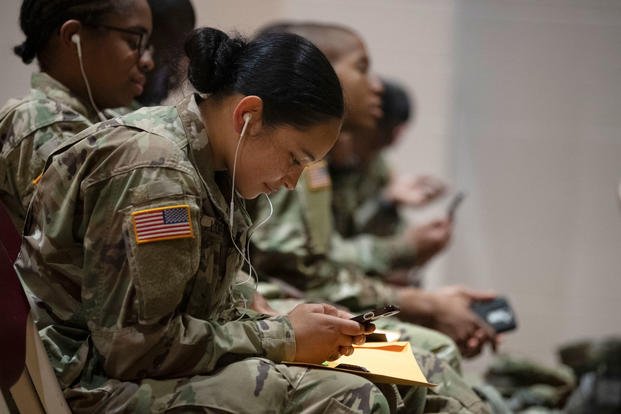The Army National Guard just moved to a new personnel system that does away with paperwork, allowing every member to track promotions, pay and benefits by smartphone.
As of March 24, National Guard personnel officials completed transitioning 331,000 members in 50 states and four territories onto the Integrated Personnel and Pay System-Army (IPPS-A), the first step in the Army's effort to bring the Guard, Reserves and active force under the web-based human resources system in late 2021.
Until now, each state operated under its own version of the outdated Standard Installation and Division Personnel Reporting System (SIDPERS), a paperwork-driven system that struggled to keep pace with promotions and benefits changes.
"This is a game-changer for them; they are going from 1970s technology into today's state-of-the-art technology," Roy Wallace, assistant deputy chief of staff for personnel, told defense reporters Tuesday during a virtual roundtable discussion.
Over the past month, the IPPS-A system has allowed Guard leaders to more efficiently track the thousands of troops that have been activated in response to the novel coronavirus (COVID-19) pandemic. As of Tuesday morning, approximately 16,000 Air and Army National Guard troops had been called up to support the response mission across the country, according to National Guard Bureau officials.
Related: 'Tens of Thousands' of Guard Personnel to Be Called Up in Coronavirus Response
"Now, everybody is in IPPS-A. … One of the big benefits is you have everybody using the same system -- using the same processes to do such a critical activity as mobilization, which also ties to soldiers that are now activated to support the states and federal government," Wallace said.
Guard leaders have found it challenging to track members during past mobilizations, such as when Guard units were mobilized in 2017 after Hurricane Harvey hit Texas and Louisiana, said Lt. Col. June Copeland, senior National Guard IPPS-A liaison.
"It's now a lot easier, especially given this COVID-19 environment," she said. "It's easier to know who is where and who is going to support what states."
For the individual soldier, IPPS-A will eliminate the frustration of tracking paperwork that was needed in the past to update their records, Wallace said.
"In the past, when you took a piece of paper and said you wanted something done in your HR world, it went into the 'Black Hole of Calcutta,'" he said. "In this system, it can come off their iPhone and they can see it's on Sgt. Smith's desk, and then it says the next step is Capt. Jones' desk ... so they have an unbelievable amount of visibility on what they are doing. That is one of the huge changes is the amount of visibility we provide to the individual and, from an HR perspective, that is going to cut down probably 50% percent of the inquiries that we get, and we can start working on the more important things than just ... 'Hey, where is my piece of paper?'"
Soldiers can use their smartphones to make updates, such as changes to their marital status or when they have a baby, said Col. Gregory Johnson, the IPPS-A's functional management division chief.
"You can take a picture of that documentation and then forward it to your HR professional in a personnel action request sitting on your couch," Johnson said. "This is like, 'Welcome to the modern world, Army.'"
IPPS-A will also reduce the lag time soldiers have experienced waiting for promotions and pay increases to be finalized, Johnson said.
"The soldier is promoted, the pay system is triggered and the soldier is paid," he said, describing how the system automatically updates pay and benefits.
"We have Guard members say, 'This is amazing,'" Johnson added.
The lessons the Guard has learned changing over to IPPS-A will help ease the transition when the Army Reserve and active force transition to the system by December 2021, Guard officials said.
"It's a monumental feat to put 330,000 users in an HR system ... but we got it done," Johnson said. "The National Guard has kind of led the Army into the future here, really setting the foundation for the Army to operationalize its people strategy.
"For us it's a big, big deal, and it's going to allow us to throw the other two components into the system and then manage ... all soldiers in one system."
-- Matthew Cox can be reached at matthew.cox@military.com.
Read More: Army's New Promotion System Could Mean Separations for Some Soldiers












